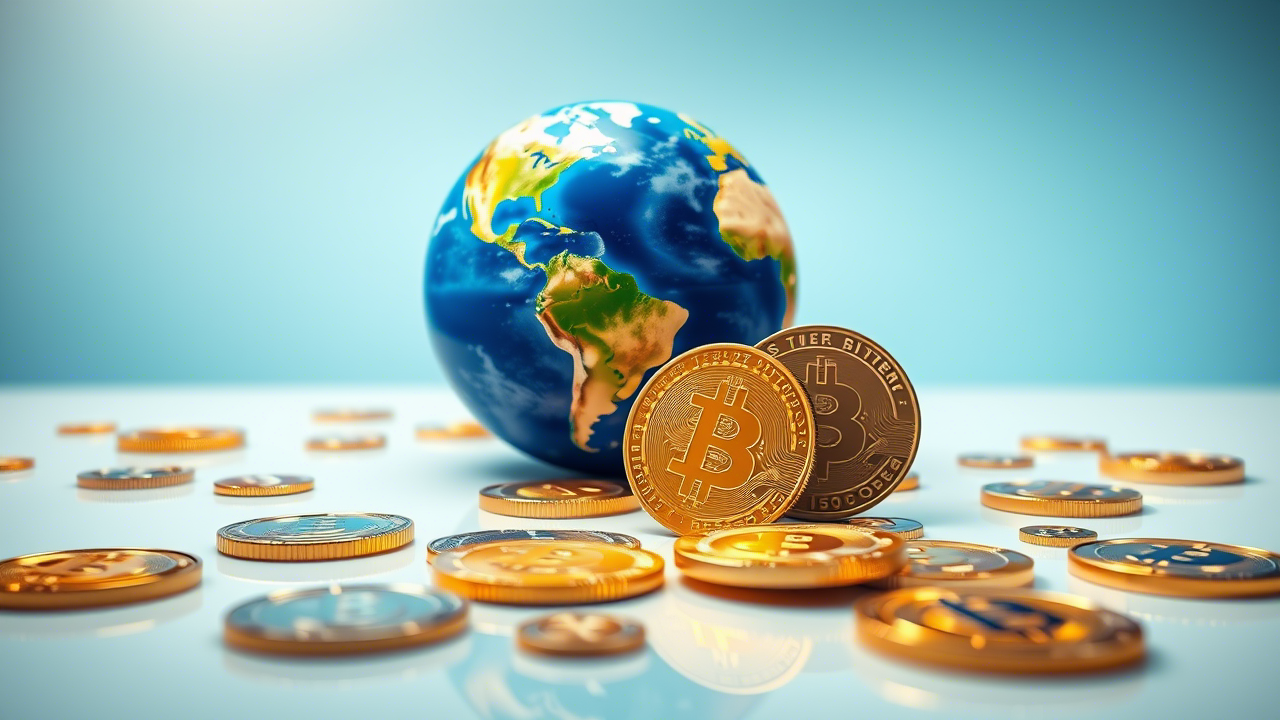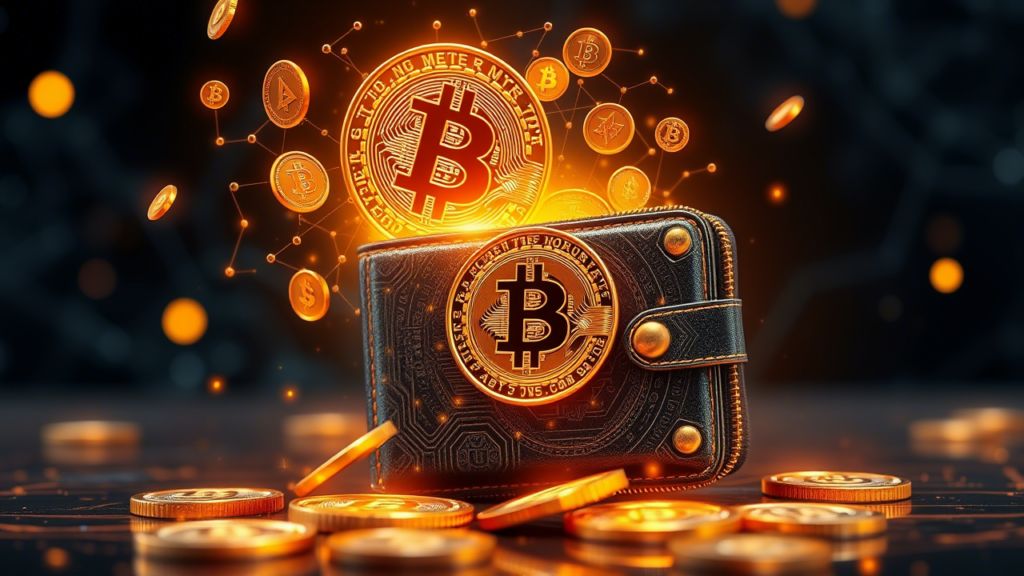In many parts of the world, financial inclusion isn’t as simple as walking into a bank and signing up for an account. Some people live miles away from the nearest branch, while others are blocked by endless paperwork, high fees, or strict requirements. Yet, smartphones are everywhere—acting as a gateway to the digital world and offering new opportunities to access financial services without the barriers of traditional banking.
Despite this, billions remain financially excluded, relying on cash, expensive remittance services, or risky informal lenders. Traditional banking systems often fail them, making it difficult to save, send, or receive money securely.
Crypto changes that. With just a smartphone and an internet connection, anyone can access a digital wallet—no bank account required. There are no middlemen, no costly fees, and no barriers based on where you live. Crypto isn’t just an investment tool; it’s a lifeline for financial freedom.
But how exactly does it work? Let’s break it down.
The Financial Challenges in the Developing World
For billions of people, managing money isn’t just inconvenient—it’s an uphill battle. While some take online banking and instant payments for granted, others are stuck dealing with outdated systems, high costs, and currencies that lose value overnight. Here’s why traditional finance isn’t working for everyone.
Banks? What Banks?
For many, opening a bank account isn’t as simple as filling out a form. Banks require official IDs, proof of income, and sometimes even a minimum deposit. If you live in a rural area, the nearest branch might be miles away. No bank means no savings account, no easy way to receive payments, and no access to financial tools that could help build a better future.
Fees That Take a Big Bite
Sending money home shouldn’t cost a fortune, but traditional remittance services charge fees that can reach double digits. Even something as basic as withdrawing cash from a bank can come with extra charges. When every transaction comes with a price tag, financial services stop being helpful and start feeling like a luxury.
Money That Loses Value Overnight
In some places, saving money in the local currency is like trying to hold water in your hands—it just slips away. Inflation can wipe out earnings in months, forcing people to spend quickly before their money loses value. Without stable savings options, financial planning becomes almost impossible.
Locked Out of the Global Economy
Imagine being a freelancer who just landed a client from another country, only to realize there’s no easy way to get paid. Many global payment platforms don’t support certain regions, and traditional banking makes international transactions slow and expensive. This leaves countless entrepreneurs and workers unable to access better opportunities.
These challenges don’t just create financial headaches—they hold people back. But what if there was a way to bypass banks, avoid sky-high fees, and store money in a currency that doesn’t lose value overnight? That’s where crypto starts to change the story.
How Crypto Provides Solutions for Financial Inclusion
Traditional banking systems may have shut the door on billions of people, but crypto is handing them the keys to a new financial future. With just a smartphone and an internet connection, anyone can access financial tools that were once out of reach. Here’s how crypto is changing the game.
Related: Strategy Sells $1.4B in Stock to Cover Bills Amid Bitcoin Slump
A Bank in Your Pocket
No bank? No problem. Crypto wallets let people store, send, and receive money without needing a traditional account. There’s no paperwork, no minimum deposit, and no middleman deciding who gets access. If you have a smartphone, you have a financial hub—one that’s open 24/7.
Cutting Out the Middlemen (and Their Fees)
Remittances are a lifeline for many families, but sending money across borders through traditional services is slow and expensive. Crypto makes these transfers almost instant and dramatically cheaper, allowing people to send and receive payments without losing a big chunk to fees.
Protection Against Unstable Currencies
When inflation eats away at a local currency’s value, savings can disappear overnight. Stablecoins like USDT and USDC give people a way to store their money in a currency that holds its value. Bitcoin, often called “digital gold,” provides another alternative for those looking to escape the cycle of inflation.
Opening the Doors to Global Opportunities
For freelancers, entrepreneurs, and small business owners, getting paid internationally can be a struggle. Many global payment platforms don’t support certain countries, and bank transfers are slow and costly. Crypto allows people to bypass these barriers, receive payments directly, and participate in the global economy—no bank approval needed.
By replacing outdated financial systems with open, borderless alternatives, crypto is leveling the playing field and giving people more control over their money. The best part? This revolution is just getting started.
Real-World Examples of Crypto Adoption
Crypto is already transforming economies, providing financial solutions where traditional banking falls short. Here are some key examples of how it’s being used around the world:
El Salvador: The Bitcoin Experiment
- First country to adopt Bitcoin as legal tender in 2021.
- Aimed to improve financial inclusion and lower remittance costs.
- Faced challenges due to volatility but sparked global discussions on national crypto adoption.
Nigeria: Crypto Thrives Despite Restrictions
- One of the highest crypto adoption rates worldwide.
- Government restrictions haven’t stopped Nigerians from using crypto for remittances and savings.
- Peer-to-peer (P2P) trading has flourished, proving demand for alternative financial systems.
Venezuela: Crypto as a Lifeline
- Hyperinflation has made the local currency nearly worthless.
- Many citizens use Bitcoin and stablecoins like USDT to protect their savings.
- Businesses and humanitarian aid groups are adopting crypto to bypass government restrictions.
Kenya: The Rise of Mobile Money and Crypto
- Built on the success of M-Pesa, a mobile banking service widely used in Kenya.
- Crypto offers more financial freedom for saving, investing, and cross-border transactions.
- Helps freelancers and entrepreneurs bypass banking limitations and access global markets.
These examples show that when traditional finance fails, people turn to crypto for solutions. As adoption grows, more communities are finding new ways to take control of their financial future.
Challenges and Criticisms
Crypto offers exciting opportunities, but it’s not without its hurdles. From unclear regulations to security risks, there are still challenges to overcome before digital assets can fully reshape global finance. Here are some key concerns:
Regulatory Uncertainty
- Many governments are still figuring out how to regulate crypto.
- Some embrace it, while others ban or restrict its use.
- Changing policies create uncertainty for businesses and users.
Volatility Concerns
- Crypto prices can swing dramatically in a short time.
- Without financial literacy, people may invest more than they can afford to lose.
- Stablecoins offer a safer option, but awareness is still limited.
Scams and Security Issues
- Crypto is a target for scams, Ponzi schemes, and phishing attacks.
- Lack of education leaves many users vulnerable to fraud.
- Without proper security (like strong passwords and cold wallets), funds can be lost forever.
Infrastructure Barriers
- Reliable internet and smartphones are still out of reach for some communities.
- Digital literacy is necessary to safely use and store crypto.
- Without proper access, some people remain excluded from its benefits.
Despite these challenges, crypto adoption continues to grow. As education, regulation, and technology improve, digital assets have the potential to provide even greater financial inclusion worldwide.
Related: The History of Altcoins: How Bitcoin’s Rivals Changed the Crypto Game
The Future of Crypto in Emerging Markets
Crypto is evolving fast, and for many developing regions, it’s opening doors to financial inclusion like never before. With new tech and growing awareness, digital assets are becoming more practical for everyday use.
Stablecoins like USDT and USDC offer the speed and accessibility of crypto without the wild price swings, while Central Bank Digital Currencies (CBDCs) could allow governments to digitize money without losing control. Both options help bridge the gap between traditional finance and the crypto revolution.
Faster, cheaper transactions are also on the rise, thanks to Layer 2 solutions like Bitcoin’s Lightning Network and Ethereum rollups. Soon, sending money across borders or even paying for a coffee with crypto could be as simple as sending a text.
Decentralized Finance (DeFi) is turning smartphones into personal banks, letting people save, lend, and invest without relying on traditional institutions. In places where banks are unreliable or out of reach, DeFi provides an alternative path to financial freedom.
None of this works without education. More initiatives are helping people understand crypto, avoid scams, and take control of their finances. The more knowledge spreads, the more crypto can drive financial inclusion—creating a world where access to money isn’t limited by geography or outdated systems.
Conclusion
Crypto is driving financial inclusion in ways traditional finance never could—opening up opportunities for millions who have been shut out of the system. It’s helping families receive remittances without sky-high fees, giving entrepreneurs access to global markets, and providing a lifeline in places where local currencies are unstable. Digital assets are reshaping the way people interact with money.
Of course, challenges remain. Regulations are still catching up, scams are a threat, and not everyone has reliable internet access. But despite these hurdles, crypto adoption keeps growing, with innovation making transactions faster, cheaper, and more accessible every day.
If traditional banking is a gated community with strict entry rules, crypto is the open road—offering financial inclusion to anyone with an internet connection. The journey may not always be smooth, but for millions around the world, it’s a powerful step toward financial freedom.












